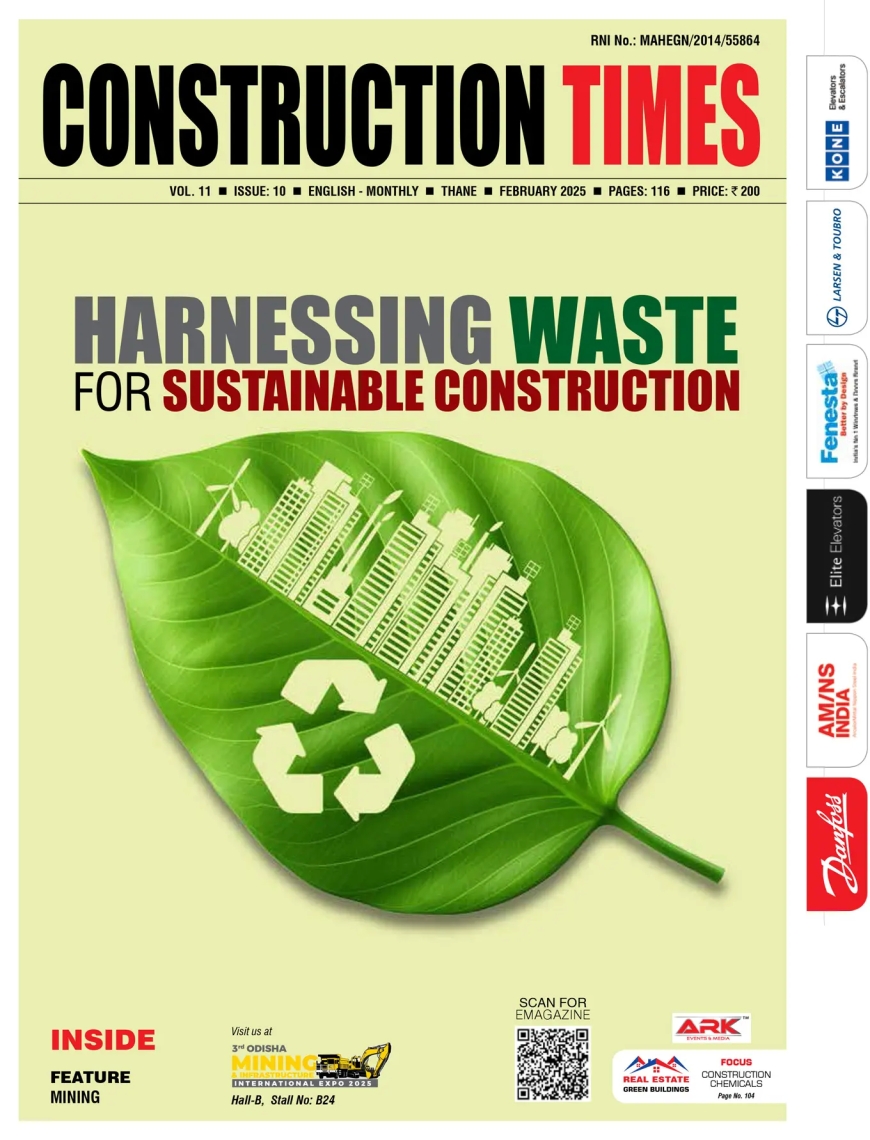India's Certified Green Future: Using Certifications to Build Sustainably
Our hopes for a healthy, sustainable future depend on how 'green' and carbon-free we can build in the years ahead, writes Gopalakrishnan Padmanabhan, MD - APAC & Middle East, Green Business Certificate Institute. (GBCI) As India's population increases, greenhouse gas emissions and pollution all continue to rise andthe country's plans to


Our hopes for a healthy, sustainable future depend on how 'green' and carbon-free we can build in the years ahead, writes Gopalakrishnan Padmanabhan, MD - APAC & Middle East, Green Business Certificate Institute. (GBCI)
As India's population increases, greenhouse gas emissions and pollution all continue to rise andthe country's plans to implement a sustainable future become more important than ever. One of the surprising side effects of the country-wide COVID-19 lockdown has been the drop in carbon emissions and pollution. But as plans are made to reopen India, it is imperative that we don'tlose sight of our goals to build upon this progress.
With population expected to reach1.5 billion by the year 2030, the construction and real estate sectors need a major overhaul if they are to meet the growing demand for buildings and infrastructure in a way that accounts for these environmental issues. The structures built today could last for the next 50 to 100years; it is now our responsibility to ensure that the people who occupy them have access to the most healthy, efficient and sustainable spaces we can provide.
Using green building practices, we have the opportunity to do just that. This decision also helps India live up to its commitment to the United Nations' Sustainable Development goals, which aim to improve quality of life and protect the planet. Green certification programs provide verified, measurable and accountable systems to help move the country toward these goals. And they provide a roadmap for real estate developers and construction companies to reduce environmental impact, create high-quality indoor environments, reduce carbon emissions and ultimately mitigate the issues associated with climate-related risk.
In the two decades since rating systems were first announced, green buildings have become a trillion-dollar industry worldwide. The LEED (Leadership in Energy and Environmental Design) rating system, for example, was one of the earliest rating systems for green buildings and is now the largest program in the world for green building. It was instituted more than 20 years ago with the original goal of facilitating the transition from awareness to adoption of green building practices. India is presently the fourth largest market in the world for LEED buildings and has potential for even more growth in the years ahead. The industry has succeeded in developing and verifying projects that are measurably more efficient and more sustainable, and healthier for their occupants. Now India is tasked with continuing to progress on this important work through new lenses, such as building performance.
Over the years, the emergence of processes such as Building Information Modeling and the growing adoption of healthy and lower-emission building materials have enabled green buildings to achieve higher levels of performance. And the success of a green project is now defined not only by how it is designed and constructed but also by its ongoing performance. Green rating systems and certifications are evolving accordingly. Each new version of the LEED rating system, for instance, pushes the boundaries for resource efficiency, sustainability and performance. The latest version, LEED v4.1, which was introduced in 2018, sharpens the focus on environmental impact and the use of better materials. It raises the energy reference standard and adds a carbon metric for both new and existing buildings. Furthermore, it introduces a renewable energy credit to incentivize buildings to invest in clean energy and to examine the carbon content of materials and the construction process; this allows for a more accurate measurement of the building's impact on the environment.
Over the past decade, it has become increasingly apparent that working toward net zero carbon emissions is an essential requirement to mitigate climate-related risk. We must take it a step further and aim for net zero buildings - including net zero carbon emissions, energy use, water use and waste. This will offer one of the most effective means to reduce the carbon emissions, energy use, water use and waste generation of new projects. LEED Zero, a certification that directly addresses this issue, has already been awarded to 17 projects across the world.
The way to achieve these milestones is through project performance, and the green certification industry has responded with increasingly sophisticated tools to track data and measure success. Tools such as the Arc performance platform (Arc is a digital platform that uses data to help measure and improve sustainability performance across the built environment, from buildings to cities and beyond.) capture real-time data for calculating and analyzing energy, water, waste and transportation usage, as well as the human experience of projects. This enables buildings to improve their performance and work towards even higher efficiency.
Our hopes for a healthy, sustainable future depend on how 'green' and carbon-free we can build in the years ahead. Advancements in technology & the rising adoption of green materials will mean that sustainable design, construction and maintenance are becoming more attainable, and will eventually become the norm. Through certification programs, we have the ability to put all of our projects on track for the greener, more efficient future we seek to achieve.

Hits: 212
















